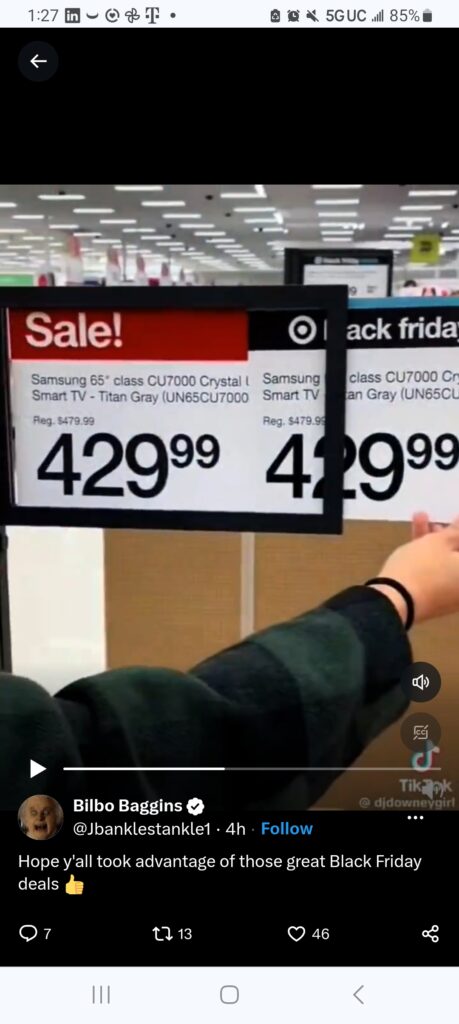
Online Black Friday sales are up 7.5% versus last year, Mastercard SpendingPlus reports a 2.5% increase, and malls are full (my anecdotal observation the last 2 days). This is great for the soft landing story but bad if you expect rates to decrease.
I went to stores and watched videos of other shoppers seeing that Black Friday deals are not Black Friday deals. Retailers are not discounting much if at all. How come?
To understand this we have to go back to the pandemic. Economics is not about taking snapshots and interpreting the data but looking at actions and reactions, and reactions of reactions.
During the pandemic, we had two driving forces. The first was supply disruptions due to government actions that shut down factories, created shipping backlogs, and saw inventory levels tumble. The second was artificial demand in the form of stimulus and cheap money. Prices went up because there was not enough supply and too much demand.
Retailers’ reaction was to overorder as supply chains were disrupted and goods took longer to arrive and demand was strong. Goods inflation rose dramatically through 2021.
By 2022, the supply issues were resolved and retailers found themselves with ballooned inventory levels. The reaction was to discount. The result was goods deflation and demand waning as it was pulled in and then shifted to services. But after 3 years people started to come back to goods as they returned to their normal lives. That 3-year old TV broke, family are coming for Thanksgiving etc.
A year later, retailers’ counter-reaction was to cut orders and run off their inventory. ISM data fell, inventory draws worked their way through and retailers went back to pre-pandemic JIT (Just in time).
Retailers are no longer sitting on large inventory levels and therefore no longer have to discount heavily or even at all. Goods deflation is now over and that means the Fed inflation war just got harder.
Actions create effects that lead to a reaction that creates a new effect that leads to a new reaction that creates another effect and reaction and so on. 3 years later, the pandemic is still affecting us through secondary and tertiary effects and reactions.
As shelter inflation is still rising at 6.7% and services less energy at 5.5% now we have to deal with goods deflation ending. We can’t pin all our hopes on energy, used cars, and medical services costs. The first is highly volatile, the second a small component and the third is going the opposite direction than historically
Markets might interpret this as a soft landing revelation. It is not. It is part of a cycle of inflation until debt that has a maturity debt starts knocking on the door and starts asking for its money back.
